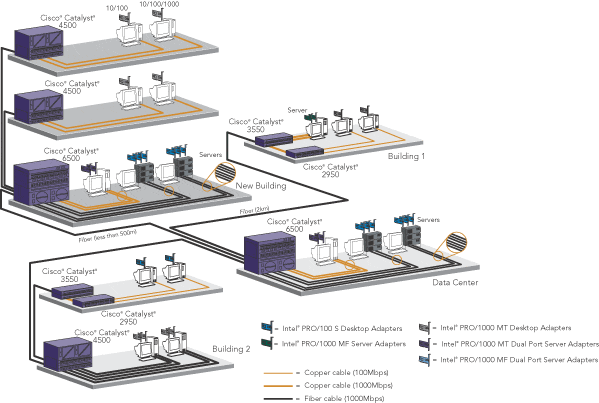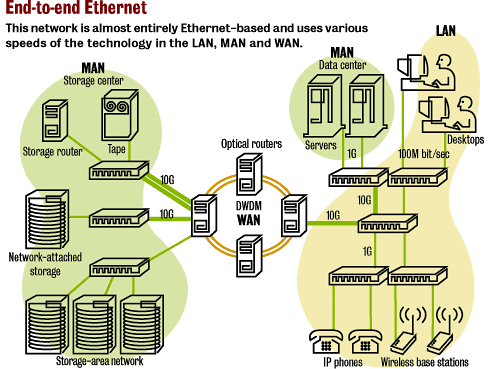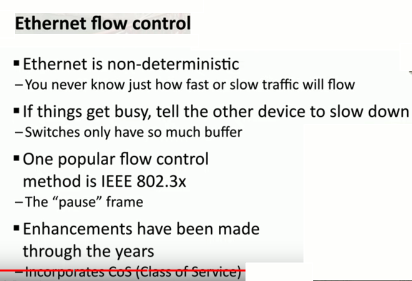
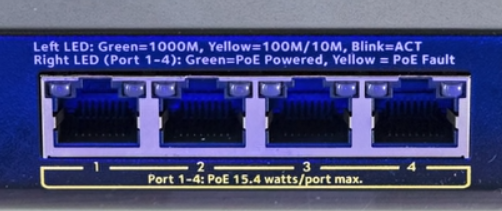
PSE: switch. PDs: WAP, security camera, VoIP, smart clock, LED lighting, POS, signage, locks, ...
Midspan injector.
Heat: Smaller cable bundles. Shielded cable.
Active: negotiate with PD using LLDP (or Cisco CDP). Passive: always-on, 24V.
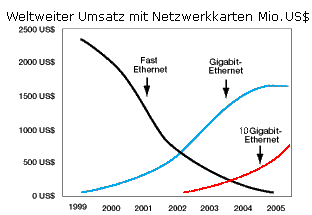
| IEEE | Name | Year | cable | max segment distance |
|---|---|---|---|---|
| 802.3i | 10Base-T | 1990 | Cat 3 | 100m |
| 802.3u | 100Base-TX Fast Ethernet | 1995 | Cat 5 | 100m |
| 802.3u | 100Base-FX and -SX Fast Ethernet | 1995 | 2 strands multimode fiber | FX: 412m, 2km full duplex. SX: 300m |
| 802.3z | 1000BASE-X Gigabit Ethernet | 1998 | fiber. SX: multimode (short wavelength). LX: singlemode (long wavelength) or multimode | SX: 220/500m. LX: singlemode 2km+, multimode 550m |
| 802.3ab | 1000Base-T Gigabit Ethernet | 1999 | Cat 5/5e/6 (all 4 pairs used) | 100m |
| 802.3an [-2005]? | 10GBASE?? 10GbE (10 gigabit Ethernet) | 2003 | fiber | various... |
| 802.3an | 10GBASE-T 10GbE (10 gigabit Ethernet) | 2006 | Cat 6/6a/7 | 6: 56m. 6a: 100m |
| 802.3bz | 2.5GBASE-T 5GBASE-T | 2016 | Cat 5e/6/6a | |
| 802.3ba bg,bj,bm,cd | 40GbE, 100GbE | 2010-2018 | fiber | fiber: ≤80km, twinax:7m, "Cat 8":30m(40GBASE-T) |
| 802.3bs ... | TbE (>100GbE) 400GbE | 2017 | fiber |
1000BASE-ZX and LH singlemode reach 70-100 km.
10BaseT was half-duplex, only one
station/node transmitting at a time, CSMA/CD, hub as concentrator and
active repeater of UTP cables (analogy: party line / conference call).
Transmitted frame essentially broadcast to all other nodes.
Full-duplex added with 100Mbps versions eliminates need for CSMA/CD
(is disabled),
can receive while transmitting thus 200Mbps bandwidth per station,
concentrator must be full-duplex capable switch.
Trends: faster, stricter cabling requirements, complex encoding and
electronics.
Jumbo 9KB, 16KB frames non-standard? non-interoperable?
Used in SAN and? NAS for greater efficiency.
CSMA/CD: (carrier-sense multiple-access with collision detection). obsolete.
Node wanting to transmit a frame first listens to (shared) medium, if link busy then wait.
until link is unused, then transmit frame, listening for collision
if collision, both transmitters stop, backoff (i.e. wait) for random timeout, then goto start again.
Because each of the two transmitting/colliding nodes wait for different backoff (by randomness), one
will timeout before the other and probably be able to get the medium.


PSE: switch. PDs: WAP, security camera, VoIP, smart clock, LED lighting, POS, signage, locks, ...
Midspan injector.
Heat: Smaller cable bundles. Shielded cable.
Active: negotiate with PD using LLDP (or Cisco CDP). Passive: always-on, 24V.



